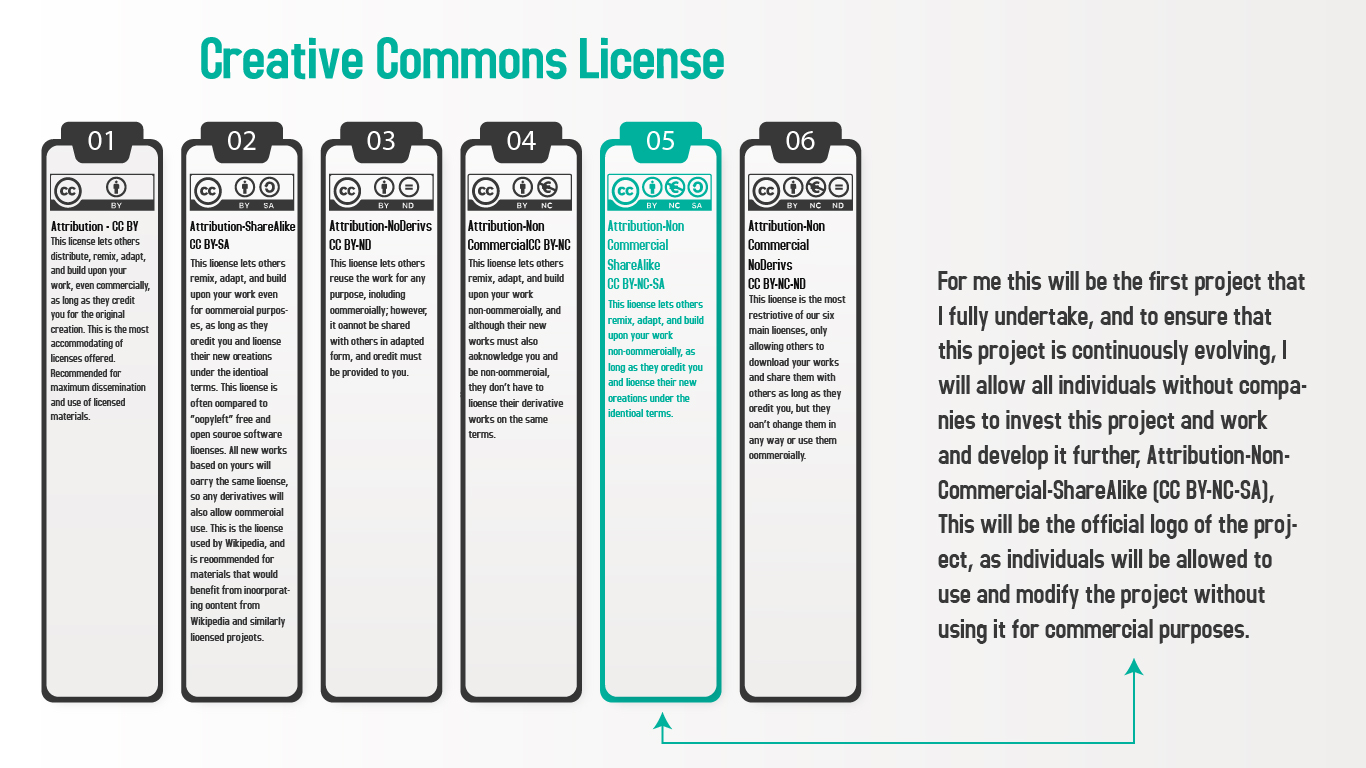Invention, Intellectual Property & Income
This week I have to do a research about whether I should register a patent for my final project, but after looking and analyzing the project that I will be working on I saw that I should not register a patent for this project as it is a simple project that anyone can have enough equipment By building this project as patents are registered for large and heavy projects that cannot be created easily, also when thinking about this project was to eliminate a need and not to invest in it or register any patent so I will suffice to establish the project and benefit from it on a personal level, At the present time, open source projects have multiplied and have become a good way to help others in developing small projects so I will finally put the project to everyone and make it open source so that anyone else can amend it and add and make any other changes that others can benefit from. But when developing an open source project I will probably need a license to save my copyright.
The beginning of what I'm going to do is a small robot that tracks the person as well as a built-in camera inside that depicts the person in 360° and can capture everything around them.
Creative Commons License
Creative commons - or "CC" - are defined as a global, not-for-profit organization that provides producers, innovators, and others with free licenses when publishing their work, as these licenses determine the validity of others' use of those works within specific conditions، When a work is produced such as writing an article, taking a photo، And more, that work is automatically protected by copyright. These copyrights prevent others from misusing these works such as copying, stealing or posting on the Internet, for example.
The Creative Commons license allows producers and creators to choose how others determine their business use. The publication of the work with the Creative Commons license enables people to know what is and is not allowed during their use of that work, and when someone wants to use it with what is not permitted in the license, then permission must be obtained from the work producer to do so.
Elements of the creative license include several types, including:
The attribution of the work to its owner (BY): You must attribute the work to its owner and mention the type of license in which it was published, and this is compulsory in all Creative Commons licenses.
Noncommercial (NC): Any use of the work must be for noncommercial purposes, for example, it is permitted to share a work for educational purposes or to share a video of a popular celebration, but it is not permitted to use that work for advertising or collecting a benefit.
No Derivation (ND): You can use the work only as it is, no modification or division of work is ever permitted. In the event that you wish to do so, such as quoting a part of it, cutting off an image, modifying a portion of the text, or using a song clip in a movie, etc., then you must obtain permission from the employer.
Likewise participation (SA): Any new work that is derived from an action subject to this article must be published in the same license as the original work from which it is derived.
The Six Essential Licenses for Creative Commons
The above elements have been collected and arranged to obtain six basic licenses:
The work ratios of its owner (BY): Type of use, commercial and non-commercial, allow you
Ownership-Non-Commercial Work Ratios (BY-NC): The type of non-commercial use that allows you.
The proportions of the business owner-likewise sharing (BY-SA): the type of use is commercial and non-commercial, it allows you.
BY-ND owner-to-work ratios: Type of use, commercial and non-commercial, permitted.
The proportions of the business-owner-non-commercial-reciprocity (BY-NC SA): the type of use non-commercial, it allows you.
Employer Percentage Without Derivation (BY-NC ND): The non-commercial use type allows you.
Income
Currently I am not thinking that there will be any profits from the product because I will be using it on a personal level, maybe in the future I will change my idea and I will try to make money through this project if I see that it can bring profits to me.

For me this will be the first project that I fully undertake, and to ensure that this project is continuously evolving, I will allow all individuals without companies to invest this project and work and develop it further, Attribution-NonCommercial-ShareAlike (CC BY-NC-SA), This will be the official logo of the project, as individuals will be allowed to use and modify the project without using it for commercial purposes.
